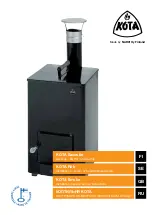
19
Operation
A. Inbound SIP Calls
How inbound SIP calls are handled depends on the Inbound Call Mode selected (see Programming section 26), the
current programming for Night Ring Timed Operation if enabled (see Programming section 14), the current time of day
and day of week. If Night Ring Timed Operation is disabled and the Inbound Call Mode is set to Auto Answer, the
300-IP
will automatically answer inbound calls, provides a Pre Page Alert Tone if enabled and allows paging through the unit.
When the Inbound Call Mode is set to Auto Answer – Secure, the
300-IP
auto answers inbound calls but the party must
dial the Access Code before they are allowed to page from the unit. The Inbound Call Mode also has options that allow
the unit to output a loud ring on any inbound SIP calls. The Ring option outputs a fixed volume ring and is adjustable
(see Programming section 23). If Night Ring Timed Operation is enabled and an inbound SIP call is received between
the programmed start and stop times and the current day is a programmed active day, the unit will automatically output
a loud ring instead of following the Inbound Call Mode programming. This allows for loud ring at certain times of the
day/days of the week and paging all other times/days of the week.
B. Multicast
The
300-IP
can be set to one of two modes for multcasting, Standard or Polycom. Polycom is only used when Polycom
IP phones are used. To change to Polycom multicast, go to the “Paging” tab and change the “Multicast Page Type” to
Polycom.
Standard Multicast Paging (Factory Setting)
Up to 10 multicast paging groups can be programmed into each unit and each group is assigned a priority level allowing
simultaneous arriving multicast pages to be handled based on importance. Low priority groups are often used for low
priority streams like background music and high priority groups are used for high priority streams such as emergency
messages. Group 0 is the highest priority, and Group 9 is the lowest. A timeout limit can be set and either enabled or
disabled for each multicast group. The volume of each group can be programmed and SIP Paging can be assigned
either higher or lower priority than all or some of the multicast groups (see Programming section 11).
Polycom Multicast Paging
Polycom phones send multicast audio to a specific IP address and port. A total of 25 groups can be used and groups
1 through 24 can individually be enabled/disabled in each
300-IP
. Group 25 is always enabled, as group 25 is generally
used for emergency broadcasts. Any multicast page made from a Polycom phone (on the same LAN) to the
programmed IP address, port and to an enabled group will play through the
300-IP
paging horn. The priority of Polycom
sources ranges from group 1 (lowest) to group 25 (highest). SIP Paging can be assigned either higher or lower priority
than Polycom group 1 through 24 multicast paging (see the table in programming section 11 for Polycom paging
priorities). Multicast page timeout can be enabled/disabled globally for groups 1 through 24 (there is no timeout for
group 25) and the length of the Multicast page timeout is adjustable. The volume for Polycom multicast is set globally
for all groups.






































